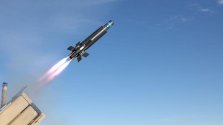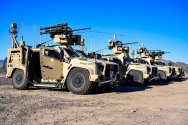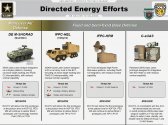You are using an out of date browser. It may not display this or other websites correctly.
You should upgrade or use an alternative browser.
You should upgrade or use an alternative browser.
US Military News, Reports, Data, etc.
- Thread starter tphuang
- Start date
Land based autonomous refueling demonstration using a K-MAX helicopter:
US Army to purchase thousands of counter-UAV interceptors from Raytheon
The US Army plans to acquire thousands of small unmanned aerial vehicles (UAVs) designed to intercept and destroy enemy drones.In a solicitation released on 18 December, the army revealed its intent to award a sole-source purchase contract to Raytheon for the Coyote UAV interceptor, covering 6,700 of the tube-launched, expendable aircraft. Coyote is an air-breathing, radar-guided missile powered by synthetic aviation fuel, according to the army description.

The system boasts a flight endurance of one hour and can be flown individually or “netted together in swarms”, according to Raytheon.
While the army solicitation notice does not represent a formal commitment to the acquisition, the purchase would represent a substantial expansion of the existing Coyote programme, which the army is currently fielding in smaller numbers.
“The US Army has a need to develop, produce and maintain countermeasures against enemy armed and intelligence gathering uncrewed aerial systems operating at various speeds and altitudes which are targeting both US and their allies’ interests at home and abroad,” the Pentagon says.
The solicitation outlines the army’s desired Coyote equipment list, including 6,000 explosive warhead kinetic interceptors, 700 “non-kinetic” interceptors, 252 fixed launchers, 25 mobile launch systems and 151 Ku-band fire control radars.
In the context of counter-UAV weaponry, non-kinetic refers to the use of electronic warfare or directed energy to jam or destroy enemy drones. Raytheon has previously declined to disclose specifics about what approach is used in the non-kinetic Coyote variant.
Defence producers in the US have been rushing to develop and deploy counter drone systems, as at the Pentagon.
Small UAVs, including commercially available quadcopter drones and purpose-built military platforms, have on the battlefields of Ukraine.
Iranian-made loitering munitions like the long-range have bombarded population centres, while both Ukrainian and Russian forces have modified small quadcopters to directly attack armoured vehicles and dismounted troops or act as airborne spotters for artillery fire.
US forces in the Middle East, including both naval ships and ground bases, have taken fire from Iranian-backed proxy groups using so-called “kamikaze drones” on since October, with at least 65 US .
Such munitions are cheap to produce and can be deployed in numerically dense waves or swarms – potentially overwhelming conventional air defences.
Western air defence systems provided to Ukraine, such as Raytheon’s Patriot battery, have proven capable of defeating the threat, but require large, guided missiles that are costly and complex to produce.
Coyote is an answer to the problem of protecting battlefield troops and installations from the threat of lethal UAVs.
The system is light enough to be fired from a small tactical truck and cheap enough to be produced in mass quantities. While no dollar figures are included in the army’s sole-source announcement, a single Coyote interceptor is believed to cost between $100,000 and $200,000.
US defence start-up Anduril in November to the Coyote – playfully dubbed the Roadrunner – which the California manufacturer says will have a price point in the “low six figures”.
While the Raytheon Coyote is an expendable system, Anduril says the Roadrunner is capable of landing vertically for refuelling and reuse, if the interceptor’s explosive warhead is not activated during a mission.
The Block 1 Coyote drone is just an electric motor powered drone. It looks kind of like the Switchblade. While this Block 2 Coyote drone that is jet powered seems to be pure vaporware. This all seems like a terrible idea to me. You want to shoot the drones with something that is cheaper per shot, not more expensive. In the case of the Shahed the thing has no AI at all. It should be much cheaper than something like this. And I doubt the Block 1 Coyote drone can intercept a Shahed. The Coyote is just too slow.
Lasers, and electronic warfare devices seem like much more promising anti-drone systems. Even mini air to air missiles like the ones the Russians are developing look more viable. The Russians have been developing versions of the Pantsir with two smaller missiles instead of one of the regular ones, and versions of the Tor with two smaller missiles instead of just one regular missile. i.e. Morfey.
Lasers, and electronic warfare devices seem like much more promising anti-drone systems. Even mini air to air missiles like the ones the Russians are developing look more viable. The Russians have been developing versions of the Pantsir with two smaller missiles instead of one of the regular ones, and versions of the Tor with two smaller missiles instead of just one regular missile. i.e. Morfey.
TerraN_EmpirE
Tyrant King
Coyote II is meant to be part of a layered cake of C-UAS. Which is critical here because it’s not Coyote II or EW or lasers but an all of the above.
The price calculation is a strawman argument really because end game is well the Shahed is cheap the missile expensive what the missile protects is more expensive. Let’s face it a 10million dollar missile is cheaper than a 500 million dollar hospital or billion dollar power plant.
The price calculation is a strawman argument really because end game is well the Shahed is cheap the missile expensive what the missile protects is more expensive. Let’s face it a 10million dollar missile is cheaper than a 500 million dollar hospital or billion dollar power plant.
There are several solutions:
There is Marine Air Defense Integrated Systems (MADIS) for the USMC -

It employs a combination of electromagnetic weapons (such as jammers) and kinetic weapons to disrupt or destroy targets.
The cannon is the MK44 Bushmaster II 30x113mm (a version of the Apache's M230), 2 Stinger MANPADS are more than enough to deal with observation drones that can orbit at +- 4km away and a 30mm airburst ammunition easily deals with the small FPV drones.
It is worth noting that the Stinger is the version equipped with a proximity fuze, more effective against drones. Another missile option compatible with this anti-drone system is the APKWS-PF, the Coyote 2, the Hellfire Longbow.
From what we can see, this system can be mounted on any vehicle, which increases the protection of the convoy due to the number of assets equipped with the system.
The US Army has expanded its High Energy Laser portfolio with a new 20 kW palletized HEL integrated into the FAADC2 and aimed at defeating drones. The U.S. Army is still on the 50 kW Guardian system.
One-third of all MSHORAD systems fielded by the US Army will use Directed Energy.

Some concepts are already increasing the ability to extend the range of microwave weapons like the MoRFIUS drone, the small range of these weapons is still a problem for troops, therefore the solution is to create airborne microwave weapons improving on much the C-UAS defense of a forward deployed troop.
There is Marine Air Defense Integrated Systems (MADIS) for the USMC -

It employs a combination of electromagnetic weapons (such as jammers) and kinetic weapons to disrupt or destroy targets.
The cannon is the MK44 Bushmaster II 30x113mm (a version of the Apache's M230), 2 Stinger MANPADS are more than enough to deal with observation drones that can orbit at +- 4km away and a 30mm airburst ammunition easily deals with the small FPV drones.
It is worth noting that the Stinger is the version equipped with a proximity fuze, more effective against drones. Another missile option compatible with this anti-drone system is the APKWS-PF, the Coyote 2, the Hellfire Longbow.
From what we can see, this system can be mounted on any vehicle, which increases the protection of the convoy due to the number of assets equipped with the system.
The US Army has expanded its High Energy Laser portfolio with a new 20 kW palletized HEL integrated into the FAADC2 and aimed at defeating drones. The U.S. Army is still on the 50 kW Guardian system.
One-third of all MSHORAD systems fielded by the US Army will use Directed Energy.

Some concepts are already increasing the ability to extend the range of microwave weapons like the MoRFIUS drone, the small range of these weapons is still a problem for troops, therefore the solution is to create airborne microwave weapons improving on much the C-UAS defense of a forward deployed troop.


